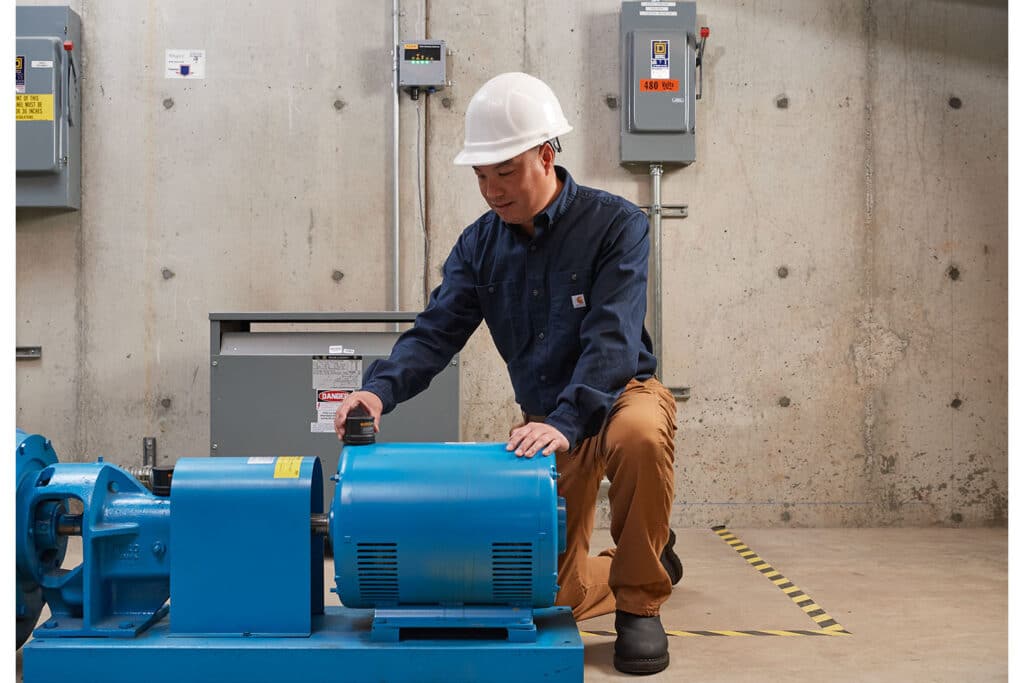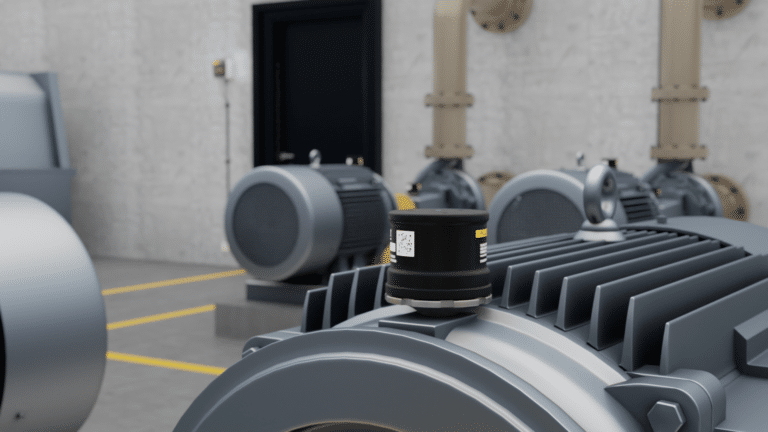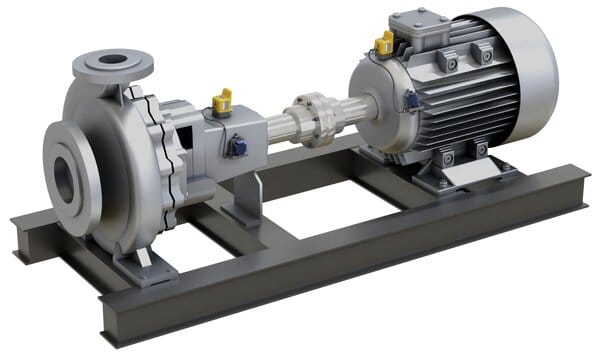
When your assets are operating normally, some level of vibration is expected. However, increases in vibration can be one of the first signs of trouble. Changes in vibration patterns are often an early indicator that something isn’t right. Fortunately, most machine failures are caused by just four problems — unbalance, misalignment, looseness, or premature wear. In fact, roughly half of all machine problems are caused by misalignment alone. And each of these common faults can be caught using vibration analysis.
Without a vibration program in place, if those patterns are left unchecked, a problem can escalate to the point of machine failure and cause costly downtime. That’s why it is so important to use a vibration measurement tool — be it a handheld vibration analyzer or a permanently installed system — to quickly identify the causes of excess machine vibration before they become a major issue.
The 4 Most Common Causes of Machine Vibration
Machine vibration is most commonly caused by one of four types of faults: unbalance, misalignment, looseness, and wear. Machine vibration can also be caused by a combination of multiple faults occurring at the same time.
Unbalance
Rotating components need to be precisely balanced to ensure they rotate smoothly and efficiently around an axis. The faster the equipment rotates, the more intense and potentially problematic any unbalance may be. And it will continue to get worse and can damage your equipment if the problem is not resolved quickly. Rotational unbalance, also sometimes referred to as imbalance, in a rotating component can be the result of a manufacturing defect, improper maintenance, or other issues. But no matter the cause, it’s important to identify and correct unbalance as quickly as possible to avoid damage and unplanned downtime. The best way to do this is using a handheld smart tool like the VibXpert II Balancer.
Misalignment
Machine vibration is frequently the result of misalignment in machine components. There are multiple types of misalignment. For example, parallel misalignment is when the two axes of components (like a motor and a pump) are parallel but slightly offset. Angular misalignment, meanwhile, occurs when those same axes are not parallel at all. Misalignment can result in machine vibration in the radial or axial direction – or both at the same time. Vibration analysis can spot these problems, which can then be corrected using a laser shaft alignment tool.
Looseness
Another common cause of unwanted machine vibration is looseness in machine components. This can range from loosely attached mounts to fatigued or faulty bearings that have come loose. Looseness, however, is not always a cause of machine vibration. It can sometimes simply be a telltale symptom of excess vibration. If the same parts repeatedly come loose, then vibrations in another section of the machine may be to blame. Whether or not a measured vibration is due to loose components, identifying and tightening any loose parts will help ensure your machine is running at peak efficiency.
Wear
As machine components age, they tend to develop faults or defects that can lead to undesirable machine vibrations. From pitted ball bearings to chipped gears to worn belts, many machine components are expected to eventually experience wear and tear and ultimately require replacement. To keep equipment running smoothly, it is important to closely monitor machine wear and replace worn parts as soon as they no longer meet your predefined performance standards. Also, be sure to carefully track your inventory of spare parts that are needed for critical machinery, as this will help you carry out timely preventive maintenance on your machines when predictable wear occurs, helping you minimize costly downtime.
How to Detect Machine Vibration
Detecting and diagnosing the cause (or causes) of machine vibration is critical to ensuring you maximize your machine’s productivity and uptime over the course of its lifespan.
When performing machine vibration analysis, you’ll want to consider three main variables: the direction of the vibration (radial vs. axial); the amplitude of the vibration (its severity); and the frequency of the vibration (in cycles per minute [CPM] or Hertz [Hz; oscillations per second]).
Many reliability professionals deploy portable devices, like the VibXpert II handheld vibration analyzer, to help them measure and record machine vibrations, then analyze them. Other maintenance teams without vibration expertise commonly deploy handheld vibration measurement devices that collect vibration data and store it in the cloud, where experts can review the data. If your team lacks in-house expertise, consider an expert remote condition monitoring service provider like Fluke Reliability.
For more critical applications where around-the-clock vibration monitoring is needed, a vibration sensor affixed to the machine itself is often the best choice. These vibration sensors make it possible to remotely monitor equipment and get real-time alerts when there’s a problem. This can save you significant time and money by avoiding disruptions to your production and reducing the risk of damage to the machine. It also eliminates or reduces the need for routes.
When paired with a modern, reliability-focused computerized maintenance management system (CMMS) like that from eMaint, vibration sensor data can help organizations realize the vision of connected reliability, where hardware and software systems across the enterprise are joined into one ecosystem, providing a comprehensive view of asset and production reliability. Armed with data and removed from siloes, maintenance professionals are equipped with the long-term trends and insights they need to make data-driven decisions.
To learn more, read Measuring Vibration for Predictive Maintenance.






